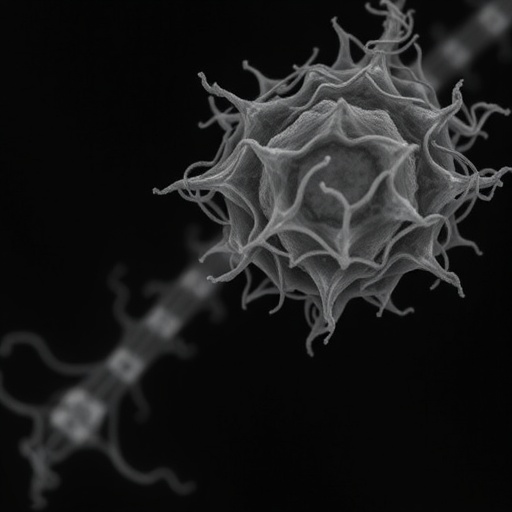In the realm of cellular biology, understanding the mechanisms of gene expression and the orchestration of splicing events have become paramount. Recent advancements in genomic studies have provided researchers with tools and methodologies to dissect these processes at a granular level. One particularly intriguing study conducted by a team led by N.M.A. Billah, alongside U. Khan and K. Islam, delves into the implications of Hub1 overexpression on the transcriptome and alternative splicing in the model organism Saccharomyces cerevisiae. This work, documented in BMC Genomics, opens a window into the complexities of transcriptional reprogramming and potential therapeutic angles for various diseases.
The study focus on Hub1, a splicing factor known to play a significant role in the regulation of gene expression, grapples with its overexpression and subsequent effects on the yeast transcriptome. The researchers hypothesized that increased levels of Hub1 would facilitate an environment conducive to alternative splicing events, which are pivotal in creating protein diversity and responding to cellular stressors. Indeed, the findings affirmed their assertions, illuminating the intricate pathways that govern splicing decisions within the eukaryotic cell.
To quantify the impact of Hub1 overexpression, the research team utilized an array of genomic techniques, including RNA sequencing and bioinformatics analyses. Through these methods, they were able to capture a comprehensive landscape of gene expression changes and splicing variations, providing insights that could transform our understanding of gene regulation and its downstream effects. The results revealed a significant number of genes undergoing alternative splicing in the presence of elevated Hub1 levels, thus emphasizing the critical role of this splicing regulator in maintaining cellular homeostasis.
Among the many revelations garnered from this investigation, the researchers observed a marked shift in the splicing profiles of genes integral to metabolic pathways, cell cycle regulation, and stress responses. By specifically focusing on the alternative splicing events induced by Hub1, the study elucidated how this protein could act as a switch, guiding the cell to alternative fates depending on the stimuli it encounters. Such findings could pave the way for novel strategies in bioengineering, provide insights into disease mechanisms, and facilitate the development of new therapeutic interventions.
Another fascinating aspect of this research involved understanding the cross-talk between transcription and translation processes, especially how the abundance of Hub1 might influence these critical cellular activities. As the team dissected the interaction between Hub1 and other key splicing factors, it became evident that overexpression of Hub1 did not work in isolation; instead, it was part of a broader regulatory network that orchestrates gene expression at multiple levels. This interconnected web of regulation underscores the complexity of genetic control in eukaryotic organisms and indicates potential targets for genetic interventions.
The implications of these findings extend beyond Saccharomyces cerevisiae, suggesting that the principles governing Hub1’s function may penetrate deeper into more complex eukaryotic cells, including human cells. The conservation of these splicing factors through evolution hints at their fundamental roles in cellular biology. As such, further exploration into Hub1 could provide a robust framework for understanding splicing disorders and pathologies associated with aberrant gene expression.
Moreover, this research opens the door to investigating how environmental stresses, such as temperature changes or nutritional variations, might further influence the expression of Hub1 and, in turn, affect broader gene expression profiles. By addressing these dynamic interactions, future studies could yield a more comprehensive view of how cells adapt to changing conditions through splicing variations and alternative transcriptional programs.
As we venture deeper into the age of genomics and personalized medicine, the findings from this study emphasize the need for interdisciplinary approaches that combine molecular biology, computational analyses, and therapeutic development. The integration of these fields will not only enhance our understanding of fundamental biological processes but also inform the design of targeted interventions aimed at correcting misregulation of splicing mechanisms in disease contexts.
The research findings also raise critical questions about the potential consequences of Hub1 manipulation in other models, including its applicability in higher eukaryotes and mammals. By understanding Hub1’s multifaceted roles, researchers can explore its potential as a therapeutic target for diseases that exhibit splicing abnormalities, like cancer and various genetic disorders. The future of this line of research promises to bridge the gap between basic science and clinical applications, ultimately enriching our therapeutic arsenal.
In conclusion, the integrative analysis of Hub1 overexpression sheds light on key aspects of transcriptional reprogramming and alternative splicing in Saccharomyces cerevisiae. The work of Billah and colleagues contributes significantly to the burgeoning field of gene regulation while posing intriguing questions for future research. As we continue to untangle the complexities of gene expression, studies like this remind us of the potential residing in unraveling the regulatory networks that define cellular life.
This cutting-edge research serves not only as a testament to the rigor of genomic research but also as an invitation for further inquiries into the adaptive mechanisms of cells. The journey to fully understand the art of splicing, regulation, and gene expression is continuous. Through sustained investigation, we may soon reveal new facets of biology that could transform our approach to medicine, biotechnology, and our grasp of life’s molecular architecture.
Subject of Research: Hub1 overexpression and its effects on transcriptional reprogramming and alternative splicing in Saccharomyces cerevisiae.
Article Title: Integrative analysis of Hub1 overexpression: driving transcriptional reprogramming and alternative splicing in Saccharomyces cerevisiae.
Article References:
Billah, N.M.A., Khan, U., Islam, K. et al. Integrative analysis of Hub1 overexpression: driving transcriptional reprogramming and alternative splicing in Saccharomyces cerevisiae.
BMC Genomics 26, 885 (2025). https://doi.org/10.1186/s12864-025-12006-w
Image Credits: AI Generated
DOI:
Keywords: Gene expression, alternative splicing, Hub1, transcriptional reprogramming, Saccharomyces cerevisiae, splicing factors, RNA sequencing, bioinformatics, metabolic pathways, therapeutic interventions.




